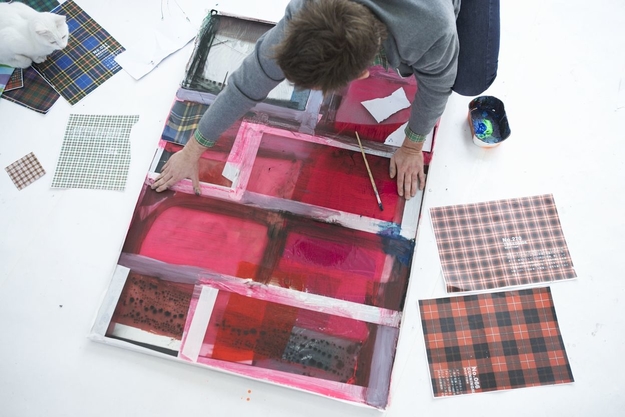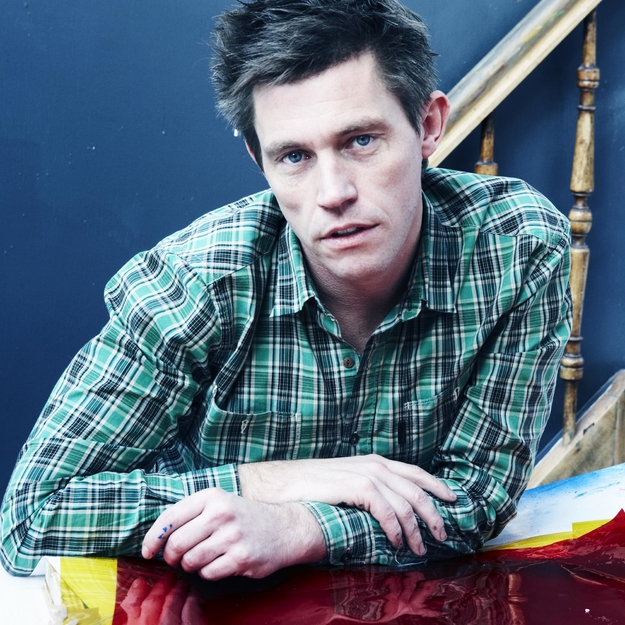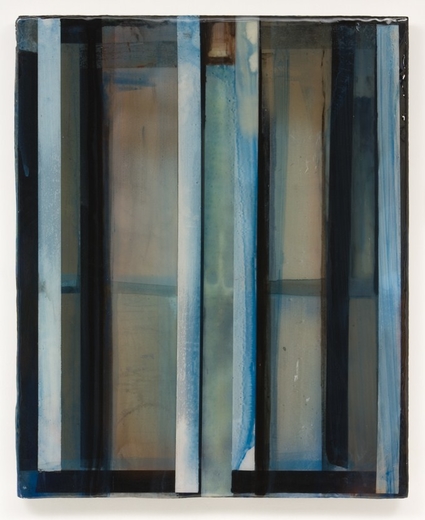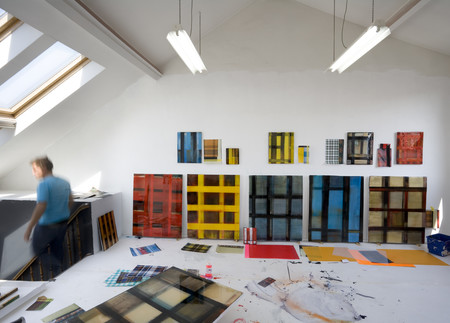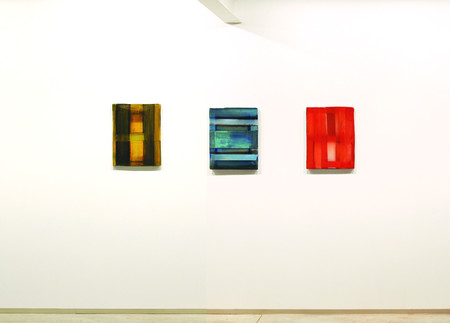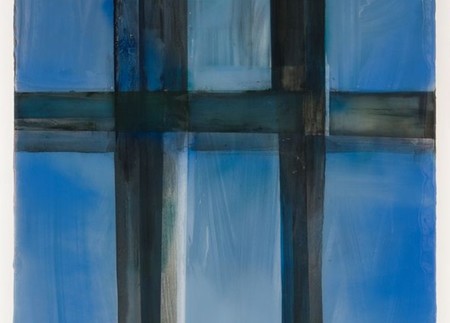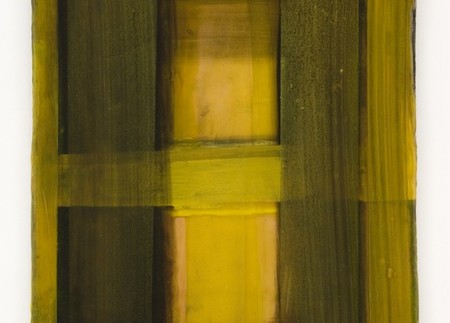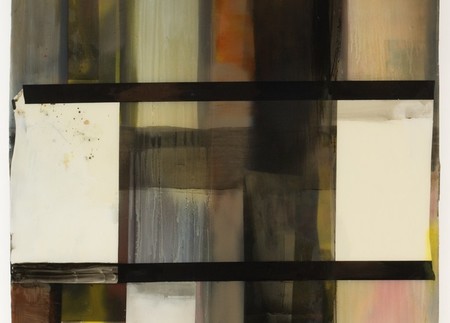Shining History
Stefan Annerel’s alchemy
Stefan Annerel’s abstract art could actually just as well be called extremely figurative.
The motifs and the colours are fresh from reality. Or rather, from the trivial. From a plastic bag to a facecloth or a pillowcase bought in a cheap chain store. The woven pattern of the bag in which the Borgerhout (Antwerp) inhabitants—most of them immigrants—carry their laundry to the launderette. A football shirt or an indefinite piece of cloth, bought at the early market. An advertisement from a well-thumbed book or a catalogue of a do-it-yourself shop. The logo of the local night shop, designed by the owner. The cheerless sign of a suspect import/export business. Wrapping paper of an Asian supermarket.
The small marks and patterns of our time. Domestic, middle-class, second-hand, local, private. Yet as universal as the large visual footprints of globalization.
Annerel first made minute copies (i.e. painted or cut and pasted them) of these patterns, measuring 1 cm x 2 cm, which he applied on index cards. The traditional index card box was and is still a basic element for Annerel—as if it were a collection of topographic maps which together constitute his universe or his territory. His collection of Polaroids. His Atlas.
Composing the collection has taken some five or six years. All this time, this labourious drudgery seemed to serve no special aim. There was no programme, no track had been charted.
Yet there was an intermediate stage. In second-hand shops Annerel bought framed reproductions, on which he then copied his motifs and patterns. On a reproduction of Man Ray, he applied one of his own collages that had been touched up with acrylics. He called it Ray. A collage on a photograph by Hans Opdebeeck became Hans. Another collage, on a leaflet with a jeans add, became Blue Jeans.
And then some alchemy entered into the game. Instead of “immortalizing” his painted collages behind a sheet of glass, Annerel had the idea that he could just as well “solidify” them in a layer of resin. The idea was the start of a process of endless deconstruction and reconstruction, but above all, it was to become a process of magnification and a process that made created “shine”.
Each of Annerel’s works nowadays consists of a basis of wood and/or glass on which a first collage has been applied with strips of paper, pieces of cloth, plastic film, airbrush and acrylics. Over these, six or seven layers of resin have been applied, but between the layers the artist has continued to work with acrylics. In the evening, the artist pours hot, molten resin over the works he considers ready, which has more or less dried up in the morning, so that the works are ready for the artist to start applying paint again.
The first works that resulted from this process were relatively small (the frames from the second-hand shops), but as the artist got more control and his confidence grew, the size of the works increased. Now Annerel creates series measuring 110 cm x 140 cm, or even 125 cm x 175 cm. It would be impossible to make them larger in his workshop on the attic of his house in Borgerhout. Furthermore, with all those layers of resin and in their metal frames, the works are particularly heavy.
Banality and triviality have acquired lustre. A lustre that is hard as glass. Tangible and unmistakable, but also illusory and deceptive—that is how lustre is. Gloomy, vague images from free catalogues have been processed and turned into marvellous areas of colour that seem to come from expensive glossy magazines. The origin of the images has been hidden, their history has been wiped out and falsified.
Thus the visual simplicity, the bustle and chaos of the working-class districts will steal its way into the lofts of harbour and the villas of suburbia. Recycled, stylized, polished.
But that too, is an illusion. For if you look carefully—deep into the image—you will still see reality. There is a hair in the resin. Now there’s a scrap of cloth, now there’s a trace of rubbish. It’s like a macroscopic image made with a telephoto lens.
Like in an apparently pitch-black surface by Rothko the yellow from five layers deeper still resonates.
Like an agitated, baroque interior by Matthias Weischer often consists of a disorientating multiplicity of soothing areas of colour.
We could just as well refer to Stefan Annerel’s abstract art as extremely figurative art, because in this instance the difference between abstract and figurative seems an abstraction.
PS Stefan Annerel’s work is also particularly suited to leave behind fingermarks. A shining history can easily become well-thumbed.
Danny Ilegems
Danny Ilegems is a journalist and art critic. With Mauro Pawlowski and Vincent Loozen he is the founder of the cooperative Beauty Is Your Duty, which is active on the interface between music, media and the visual arts.
